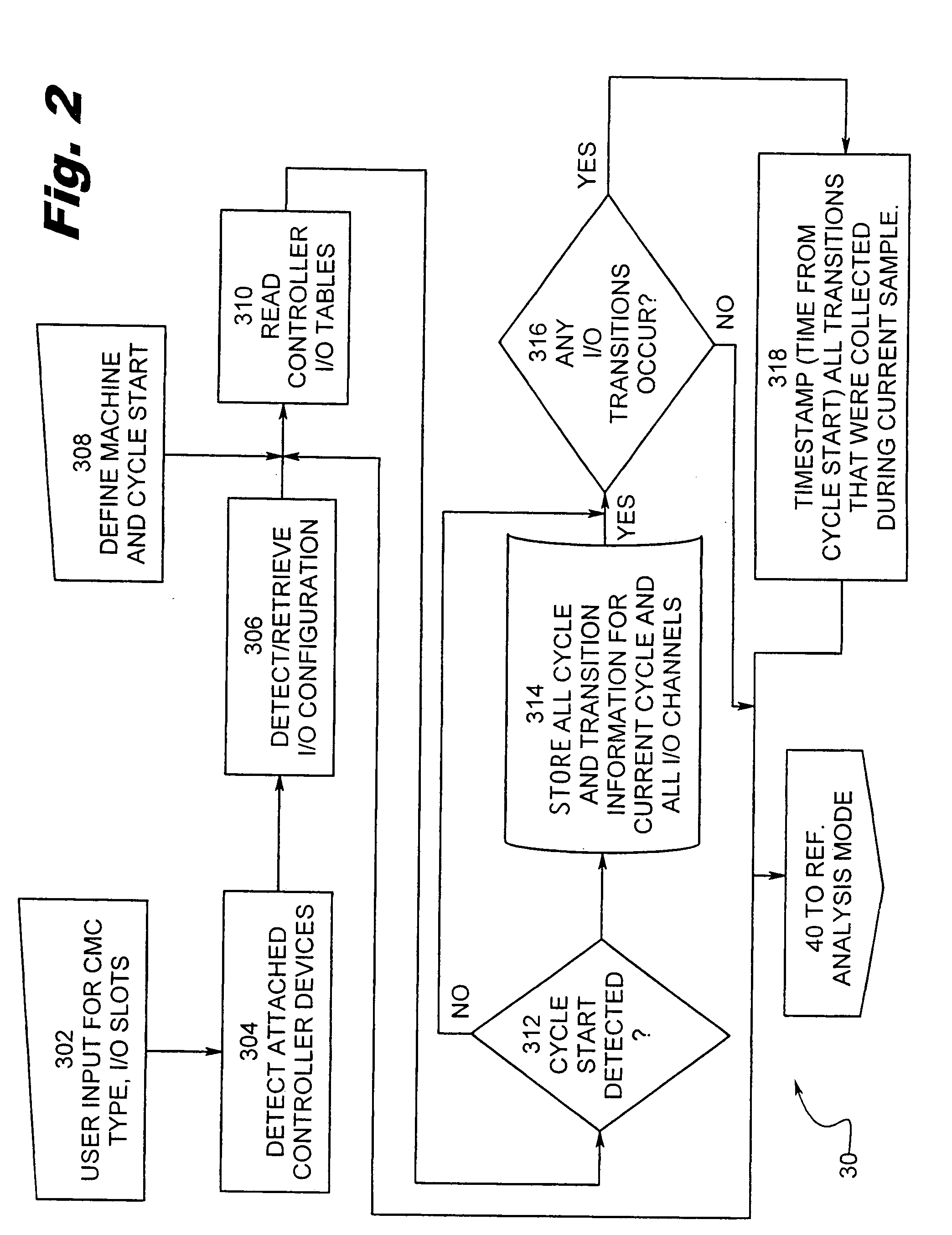Computerized machine controller diagnostic system
a machine controller and diagnostic system technology, applied in the direction of program control, setting time indication, electric unknown time interval measurement, etc., can solve the problems of considerable magnitude, low realization of asset utilization, and difficult diagnosis of malfunctions on machinery so controlled
- Summary
- Abstract
- Description
- Claims
- Application Information
AI Technical Summary
Benefits of technology
Problems solved by technology
Method used
Image
Examples
Embodiment Construction
[0083]A computerized machine controller (CMC) diagnostic system of the present invention is described hereinbelow. The CMC diagnostic system operates to acquire and monitor status changes in the input / output (I / O) tables of a PLC controlled machine or process. The system determines whether the current I / O tables of the machine or process have deviated from the expected status and provides notice to the user of such a deviation. If the deviation has resulted in a machine or process shut-down, the system operates to provide the user with an indication of the most probable cause of shut-down. The CMC diagnostic system provides the user with numerous additional tools to aid in the efficiency of monitoring and running the machine or process to which CMC diagnostic system is applied. It should be noted that the term machine is used in a generic sense and connotes a complete machine, a subset thereof (virtual machine), or a combination of different machines.
I. System Components
[0084]FIG. 1...
PUM
 Login to View More
Login to View More Abstract
Description
Claims
Application Information
 Login to View More
Login to View More - R&D
- Intellectual Property
- Life Sciences
- Materials
- Tech Scout
- Unparalleled Data Quality
- Higher Quality Content
- 60% Fewer Hallucinations
Browse by: Latest US Patents, China's latest patents, Technical Efficacy Thesaurus, Application Domain, Technology Topic, Popular Technical Reports.
© 2025 PatSnap. All rights reserved.Legal|Privacy policy|Modern Slavery Act Transparency Statement|Sitemap|About US| Contact US: help@patsnap.com



